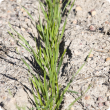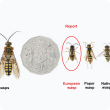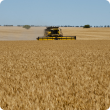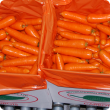Crops
The Department of Primary Industries and Regional Development continues to support the growth and international competitiveness of all crop industries in Western Australia.
With a 2400 kilometre span from its tropical north to its temperate south, WA supports a broad range of cropping industries from rain-fed winter cereals through to irrigated horticultural crops.
In the 2012/13 year the WA cropping industries exported a total of $3.9 billion which comprised: $3.1 billion of cereals, $859 million of pulses, pastures and oilseeds, $142 million of horticultural crops. The major contributors to these exports were wheat ($2.7 billion), canola ($756 million), barley ($377 million), lupins ($42 million), carrots at $48 million, oats ($12 million), and strawberries at $5.5 million.
Filter by search
Filter by topic
- (-) Remove Production & postharvest filter Production & postharvest
- (-) Remove Postharvest filter Postharvest
- Horticulture (14) Apply Horticulture filter
- Grains (8) Apply Grains filter
- Vegetables (6) Apply Vegetables filter
- Barley (5) Apply Barley filter
- Nursery & cutflowers (5) Apply Nursery & cutflowers filter
- Wheat (4) Apply Wheat filter
- Storage (4) Apply Storage filter
- Fruit (4) Apply Fruit filter
- Pests, weeds & diseases (4) Apply Pests, weeds & diseases filter
- Sowing (3) Apply Sowing filter
- Irrigated crops (2) Apply Irrigated crops filter
- Food, export & investment (2) Apply Food, export & investment filter
- Weeds (2) Apply Weeds filter
- Pastures (2) Apply Pastures filter
- Oats (2) Apply Oats filter
- Diseases (2) Apply Diseases filter
- Biosecurity (2) Apply Biosecurity filter
- Biosecurity & quarantine (2) Apply Biosecurity & quarantine filter
- Carrots (2) Apply Carrots filter
- Canola (2) Apply Canola filter
- Grapes & wine (1) Apply Grapes & wine filter
- Grains research & development (1) Apply Grains research & development filter
- Pests (1) Apply Pests filter
- Table grapes (1) Apply Table grapes filter
- Testing (1) Apply Testing filter
- Food & beverages (1) Apply Food & beverages filter
- Pulses (1) Apply Pulses filter
- Plant biosecurity (1) Apply Plant biosecurity filter
- Cauliflower (1) Apply Cauliflower filter
- Broccoli (1) Apply Broccoli filter
- Bananas (1) Apply Bananas filter
- Agricultural exports (1) Apply Agricultural exports filter
- Brussels sprouts (1) Apply Brussels sprouts filter
- Cabbage (1) Apply Cabbage filter
- Crop weeds (1) Apply Crop weeds filter
- Chinese cabbage (1) Apply Chinese cabbage filter
- Export services (1) Apply Export services filter












